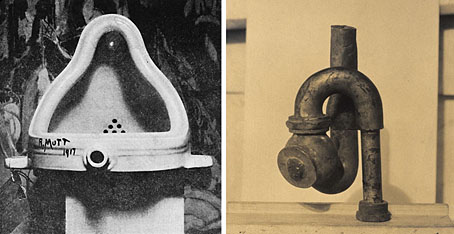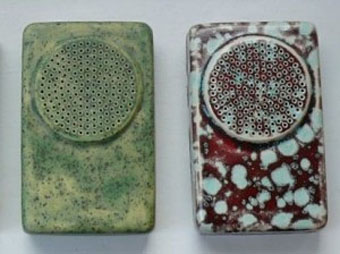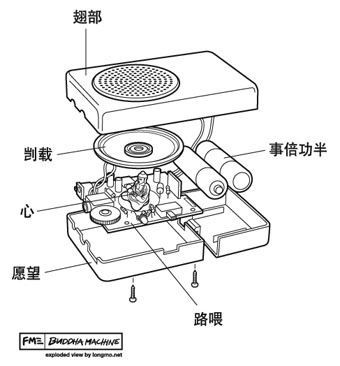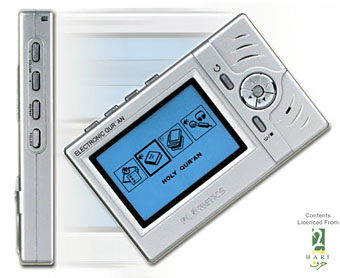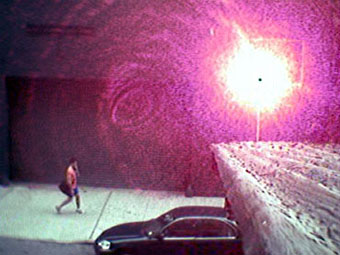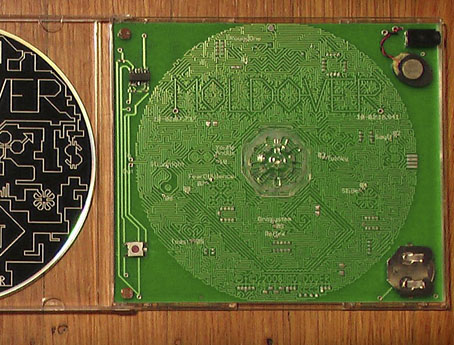
Moldover’s CD case: a working theremin.
In May this year, Brian Eno was writing in Prospect magazine about the current state of the music business as it continues to be assailed by digital technology. Among the things Eno discussed was the packaging of music:
The duplicability of recordings has had another unexpected effect. The pressure is on to develop content that isn’t easily copyable—so now everything other than the recorded music is becoming the valuable part of what artists sell. … That suggests to me the possibility of a refreshingly democratic art market: a new way for visual artists, designers, animators and film-makers to make a living. So, as one business folds, several others open up. (More.)
Having started out as an album cover artist (I wasn’t a designer back then), and working still as a CD designer, this is naturally an attractive thesis. Earlier this week John Walsh in The Independent wrote a potted history of the album cover and noted that the big record companies are also realising again that contemporary music as an artform is more than merely a collection of audio tracks:
Apple, creator of the iPod and the iTunes store—the sworn enemies of commercially-packaged music—is getting into bed with the four largest record labels, to help them stimulate album sales. They’re working with EMI, Sony Music, Warner Music and Universal Music Group on something called “Project Cocktail” that will produce all manner of extras to go with albums: interactive booklets, sleeve notes, photographs, lyric sheets, even video clips. Buyers will be able to call up album tracks through the interactive booklet, while leafing through pictures of the band and trying to make sense of the lyrics.
This, however, seems to be missing the point. Absolutely anything digital can be copied and passed on, and that applies equally to album extras as to the tracks themselves. What can’t be copied, of course, is a desirable object which contains the music. The lavish album sleeves of the 1970s were very much desirable objects which contained music, and no end of facsimile CDs of Physical Graffiti will match the impact of Peter Corriston and Mike Doud’s design for the vinyl release.
Which brings us to Moldover‘s extraordinary light-operated theremin-in-a-CD-case, a beautiful design and a really clever use of the wretched jewel case box. The music on Moldover’s accompanying CD may be swapped around illicitly but no one is going to copy the hardware. The “Awesome Edition” of this work costs $50 and can be ordered here.
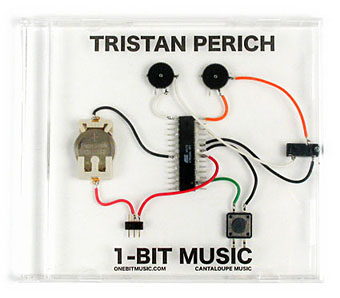
Moldover’s theremin is only an adjunct to his music, albeit a delightful one. Tristan Perich, on the other hand, like Fm3’s Buddha Machine, makes the case and the instrument one, and in Perich’s case (so to speak) possibly takes the 8-bit/chiptune thing to a definitive extreme. This is the kind of invention we could use more of, not some lazy Flash applications appended to a pop release then dumped onto the iTunes Store as an “exclusive”. It’s notable that the one thing all these works have in common is that they’re the inventions of no-budget independent artists, not big record labels.
While we’re on the subject of the Buddha Machine, the guys at Mountain*7 noted this YouTube loop work which extends the drone-loop idea into the audio/visual realm.
Elsewhere on { feuilleton }
• The album covers archive
Previously on { feuilleton }
• Buddha Machine Wall
• God in the machines
• Layering Buddha by Robert Henke
• Generative culture
